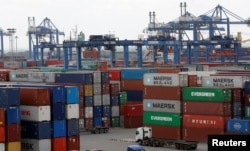Vietnam has just topped a list of economic performers in Southeast Asia, a list that Standard Chartered Bank calls the “rising stars” of global trade based on improvements the countries have made and their future potential.
The bank’s new Trade20 Index looks at 20 countries with promise around the world, and Vietnam ranks No. 6 on the index. However among the list’s countries in Southeast Asia, Vietnam is No. 1, moving past the likes of Indonesia and Thailand.
Reasons for Vietnam's Economic Success
The factors in Vietnam’s favor, according to the bank, include improved infrastructure, diverse trade with many countries and products especially amid the China-U.S. trade war, and political stability.
The single-party term of the Communist Party since 1975 is the longest in Southeast Asia, after the People’s Action Party in power in Singapore since 1959.
“Vietnam’s economic openness and integration is paying off,” Nirukt Sapru, who is the chief executive officer for Vietnam, Southeast Asia, and South Asia at Standard Chartered Bank, said last week.
“The country has now become the fastest-growing economy in the region, a clear indicator of the benefits the country is reaping from an open economy.”
Good news in the country is in contrast to the region and the rest of the world. Vietnam’s economic growth of close to 7 percent a year is about twice the rate of growth of the worldwide economy. And neighbors in Southeast Asia are dealing with a variety of worries.
Regional Problems
Workers in Malaysia worry their labor unions are losing power, while the government has increased its budget deficit as it expects to receive less in tax revenues in the near future, in part because of business slowing down from the China-U.S. trade war.
The related slowdown is decreasing Philippine exports, including the important export of rice, which is experiencing decreasing prices.
In Singapore the OCBC Bank forecast third quarter economic growth at 0.3 percent annualized, slightly higher than the 0.1 percent of the second quarter.
“This means that the Singapore economy will likely escape a technical recession,” Selena Ling, head of treasury research and strategy at OCBC Bank, said.
She added, however, “The biggest risk remains the fragility of the external environment and the prospect of anemic global growth amid the myriad of uncertainties pertaining to U.S.-China tensions beyond trade, Brexit, China’s slowdown, and geopolitical hotspots in Hong Kong, etc, which could continue to weigh on business and consumer confidence.”
Vietnam not Immune to Economic Threats
Those risks matter to Vietnam, too, however. The slowdown from the trade war could hurt Vietnam, as could a downgrade to its sovereign debt rating, which is currently under review.
Moody’s Analytics chief Asia Pacific economist Steve Cochrane and economist Steven Shields note some other risk factors to consider in the country.
These include an aging population, a labor shortage, lower levels of productivity and expertise compared with Chinese rivals, and geopolitical tensions. The tensions have created uncertainty over Vietnam’s oil exploration with Exxon in the South China Sea, where the country has territorial disputes with China and other countries.
“There remains lingering distrust between the two countries and rising anti-China sentiments in Vietnam due to recent tensions over the South China Sea disputes,” Cochrane and Shields wrote in a joint analysis.








